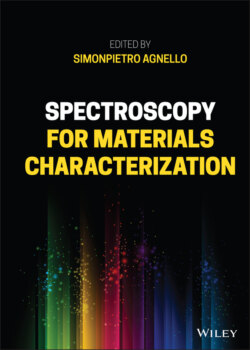Читать книгу Spectroscopy for Materials Characterization - Группа авторов - Страница 57
3.3 Transient Absorption Spectroscopy
ОглавлениеUltrafast transient absorption (TA), or pump/probe, spectroscopy is a nonlinear spectroscopic method based on measuring the changes in the absorption spectrum of a system following an external excitation [827–32]. In a TA experiment, the sample is photoexcited by a femtosecond pulse called pump and the variations of the absorption spectrum are measured by another, delayed, ultrafast pulse named probe. The probe is usually spectrally broad (400–700 nm) and this allows to record simultaneously the changes of the absorption spectrum in a wide spectral range. Moreover, the variations in the entire spectrum are recorded at different time delays between the two pulses, yielding kinetic traces of the time‐dependent absorption coefficient at every wavelength.
In these experiments, the pump pulse is normally resonant to one of the electronic transitions of the sample, in order to bring it from the ground state to an upper energy state. Then, the instrument records the intensity of a probe light pulse which has traversed, at certain delay after the excitation, the excited spot on the sample, and compares this with the result of an identical measurement without the pump pulse. As explained hereafter, the TA signal is obtained from the ratio between the probe intensities recorded with and without excitation.
